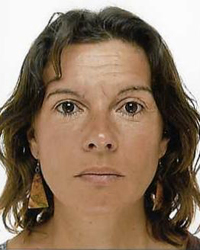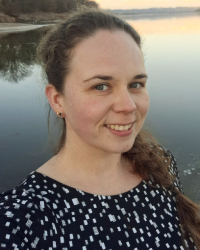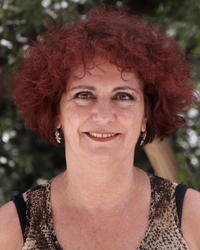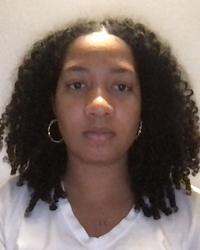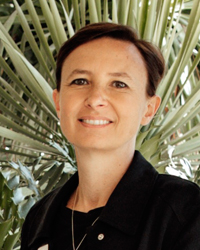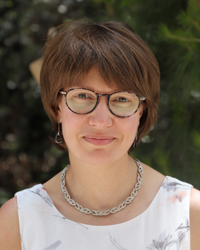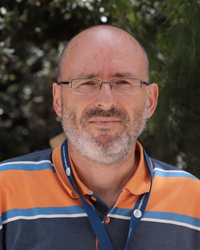This team, led by Dr. Florine Cavelier, focuses on the chemistry of amino acids and peptides, the development of new methodologies in asymmetric synthesis to the synthesis of analogues of bioactive peptides. We have extensive expertise in silylated amino acids and have developed structure-activity relationships of bioactive peptides using several tools to enhance bioavailability and modulate the affinity and selectivity for targeted receptors. In particular, we are involved in the design of stable analogues of neurotensin, to modulate the selectivity towards GPCR receptors NTS1 and NTS2. An undoubtedly minor part of our activity concerns odorant molecules, in particular the conversion of thiol precursors during alcoholic fermentation (wine and beer), or the eco-production of natural extracts and their valorization.
We exploit our know-how in both peptide chemistry and asymmetric synthesis to develop innovative strategies for the total synthesis of natural cyclodepsipeptides with a polyketide subunit, such as those of the aurilide family.

Our Themes
Neurotensin analogues
Neurotensin analogues: targeting two receptors for two therapeutic purposes
Neurotensin (NT) is a tridecapeptide, which was first isolated from bovine hypothalamus. The C-terminal fragment NT[8-13] is the minimal bioactive sequence, which induces antinociceptive action and other physiological side effects such as hypothermia and hypotension by interaction with its receptors NTS1 and NTS2.
The selectivity towards NTS2 is fundamental to exert an analgesic activity without unwanted effects. We develop NT[8-13] analogues using different approaches including unnatural amino acid incorporation and peptide bond modification to improve their affinity, stability and activity, aiming at analgesic effect for pain treatment.
Recent studies demonstrated that NTS1 is overexpressed in several cancers. We develop new radiolabeled NT[8-13] analogues, highly selective towards NTS1 with an increased plasmatic stability and lipophilicity for imaging and therapy.
Silyl and phospholyl amino acids
Silyl and phospholyl amino acids: stereoselective synthesis and applications in radio-or fluorescent labeling of peptides
We focus on methods to access hetero-substituted amino acids and their uses for peptide labeling either by fluorescence or for Positron emission tomography (TEP) imaging. In this field, radiolabeled 68Ga-NT[8-13] analogues containing (L)-trimethylsilylalanine (TMSAla) were developed and injected into xenographted nude mice for PET imaging of tumors that overexpress NTS1 receptor. On the other hand, the stereoselective synthesis of silylated amino acids and their use in peptide coupling is investigated, for an innovative radiolabeling of neurotensin by formation of a Si-18F bond.
The development of small functionalized red-emitting dyes for convenient biomolecules labeling is a hot topic, for studying molecular and biological interactions or cellular processes. For this purpose, phospholes which have the characteristics of a dienic system bridged with a tetrahedral phosphorus atom, are attractive p-conjugated heterocycles, mainly developed for optoelectronic devices. However, the use of fluorescent phospholes in bioimaging is scarce, in spite of absence of known toxicity and high photochemical stability in regard to other classes of fluorophores. In this context, we reported a new class of fluorescent phospholes amino acids with high Stokes shift stability and their use in peptide coupling. Alternatively, the chemoselective coupling of phosphole-based fluorophores to peptides by P-heteroatom bond formation, under mild conditions, is investigated. While most of the fluorophores are extended heteroaromatic p-conjugated systems with a strong tendency to aggregate in biological media, leading to a drastic decrease of fluorescence, Aggregation-Induced Emission (AIE) fluorophores constitute an interesting alternative. Therefore, we developed a new class of tetraphenylsilole amino acids by hydrosilylation of unsaturated amino acids with AIE behavior and we have shown how they could be introduced into peptides by coupling in solution or on a solid support.
Challenging synthesis of cyclopeptides of the aurilide family
Aurilides are an 11-member family of macrocyclic depsipeptides found primarily in marine cyanobacteria. Their general structure can be divided into three subunits: a pentapeptide, a polyketide, and an α-hydroxy ester. The part that requires the most effort, from a synthetic point of view, is the complex polyketide subunit which bears at least one unsaturation and three contiguous stereocenters which must be generated along with an aliphatic side-chain, whose nature depends on the member of the family. The synthetic studies concerning this subunit published until now have in common the use of a linear synthesis which has as its starting point the aforementioned side-chain. Consequently, the side-chain is fixed at the beginning of the synthesis that evolves from right to left. This means that by following this strategy, the proposed pathways only lead to a single compound. Therefore, it would be interesting to develop a single common synthesis route allowing access to all aurilides. In this context, our team has developed a conceptually different synthetic plan involving a divergent strategy, which delays the introduction of the side-chains and the hydroxy acid subunit at a late stage of the synthetic sequence. Thus, the synthesis proceeds from left to right, via the use of a shared intermediate that has the appropriate organic function to allow the introduction of different side-chains.
Asymmetric synthesis using a sulfoxide group as chiral auxiliary
Accessing the different stereoisomers of bioactive compounds remains a challenging problem in the field of drug discovery. Indeed, the aforesaid stereoisomers can exhibit different pharmacological, toxicologic, pharmacokinetic and metabolic properties. For this reason, their effects must be precisely evaluated during the drug discovery process. These considerations mandate the improvement of strategies to quickly obtain all stereoisomers of a chiral molecule to be tested.
In this context, the development of switchable stereodivergent strategies, enabling the access to stereoisomeric compounds from a common precursor via a stereoselective reaction by employing several different reactants brings an effective solution in terms of atom and synthetic steps economy.
We develop switchable reactions of substrates bearing a sulfoxide group as auxiliary, where the diastereodivergence can be tuned by parameters that don’t involve necessarily chiral chemicals. This is a major advantage compared to enantioselective approaches, where the diastereodivergence usually requires the antipode of the catalyst or chiral reagent. As an application, we described the diastereodivergent synthesis of enantiopure natural products like hemlock alkaloid (+)-α-conhydrine and its diastereomer (−)-β-conhydrine.
Aroma release during alcoholic fermentation in wine and beer
Varietal thiols have an impact on the overall aroma of many white, rosé, red wines and beers. They originate from the metabolism of non-odorant aroma precursors by yeast during the fermentation step, via a carbon-sulfur β lyase (CSL). However, this metabolism is directly dependent on efficient internalization of aroma precursors and intracellular CSL activity. Consequently, the overall CSL activity converts on average only 1% of the total precursors available. In order to improve the conversion of thiol precursors during winemaking or brewing, we investigated the possibility of using exogenously the CSL enzyme from Lactobacillus delbrueckii subsp. bulgaricus produced in E. coli. We first implemented a reliable spectrophotometric method to monitor its activity on different related aroma precursors and studied its activity in the presence of various competing analogues and at different pH values. This study allowed us to highlight the parameters to define CSL activity and structural insights for the recognition of the substrate, which pave the way to the use of exogenous CSL for the release of aromas in beer and wine.
Eco-friendly extracting and sourcing for the production of sustainable natural ingredients
This line of research, which is strongly supported by industrial collaborations, focuses on the extraction of various natural materials with the most eco-responsible vision possible, for the production of natural ingredients that can be used in the fields of perfumes, aromas, cosmetics, nutraceuticals and even therapeutics. The natural materials extracted are (axis 1) forgotten regional plants (Elaeagnus x submacrophylla, Coronilla valentina ssp. Glauca) (axis 2) invasive plants (cactus, sargassum seaweeds), but also (axis 3) waste or co-products (tree resin extraction residues, edible oyster shells). Beyond the meticulous identification of compounds of interest, the biological value-adding approaches currently being developed focus on anti-oxidant, anti-inflammatory, healing and other enzymatic activities in connection with claims in the cosmetics or medical device fields.
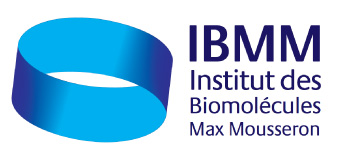
 Florine CAVELIER
Florine CAVELIER